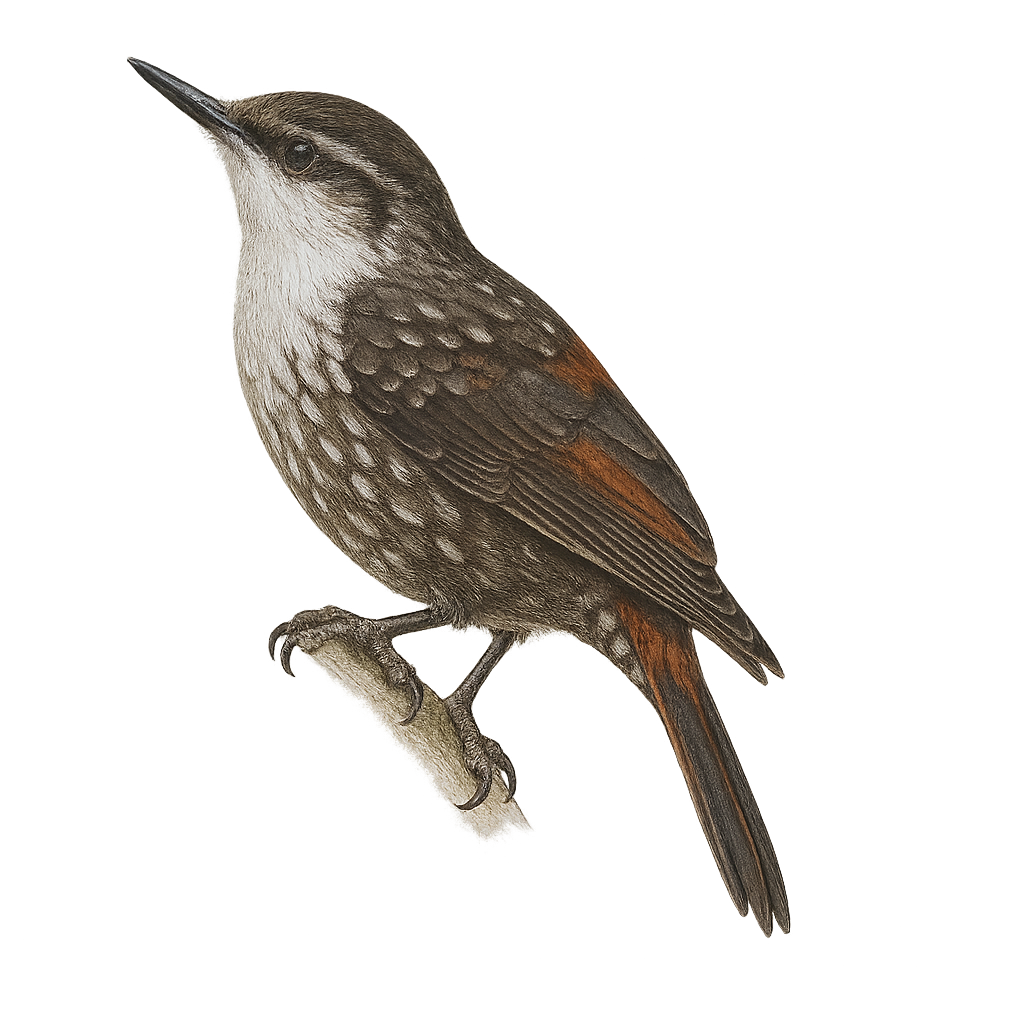Your wildlife photography guide.
Explore the white-throated treerunner in detail, study its behavior, prepare your shots.
Where to observe and photograph the white-throated treerunner in the wild
Learn where and when to spot the white-throated treerunner in the wild, how to identify the species based on distinctive features, and what natural environments it inhabits. The WildlifePhotographer app offers tailored photography tips that reflect the white-throated treerunner’s behavior, helping you capture better wildlife images. Explore the full species profile for key information including description, habitat, active periods, and approach techniques.
White-throated Treerunner
Scientific name: Pygarrhichas albogularis

IUCN Status: Least Concern
Family: FURNARIIDAE
Group: Birds
Sensitivity to human approach: Suspicious
Minimum approach distance: 10 m
Courtship display: October to December
Incubation: 14-16 jours
Hatchings: October to January
Habitat:
Temperate forests, humid wooded areas
Activity period :
Primarily active during the day, with peak activity in the morning and late afternoon.
Identification and description:
The Pygarrhichas albogularis, known as the White-throated Treerunner, is a bird endemic to the temperate forests of southern South America, particularly in Chile and Argentina. This small bird, about 15 cm long, is distinguished by its white throat contrasting with its reddish-brown plumage. It is often seen climbing tree trunks in search of insects and spiders, which it captures with its thin, slightly curved beak. Its behavior is generally suspicious, making it difficult to approach. It is primarily active during the day, exploring Nothofagus forests and humid wooded areas. Although not threatened, it is important to preserve its natural habitat to ensure its survival.
Recommended lens:
400 mm – adjust based on distance, desired framing (portrait or habitat), and approach conditions.
Photography tips:
To photograph the White-throated Treerunner, it is advisable to use a 400mm lens or longer to capture precise details without disturbing the bird. Look for areas where it is active, such as tree trunks in temperate forests. Be patient and discreet, as this bird is suspicious. Use a tripod to stabilize your camera and wait for it to move into a position favorable to natural light. Morning or afternoon light is ideal for achieving vibrant colors and good contrast.
The WildlifePhotographer App is coming soon!
Be the first to explore the best nature spots, track rutting seasons, log your observations, and observe more wildlife.
Already 1 432 wildlife lovers subscribed worldwide

